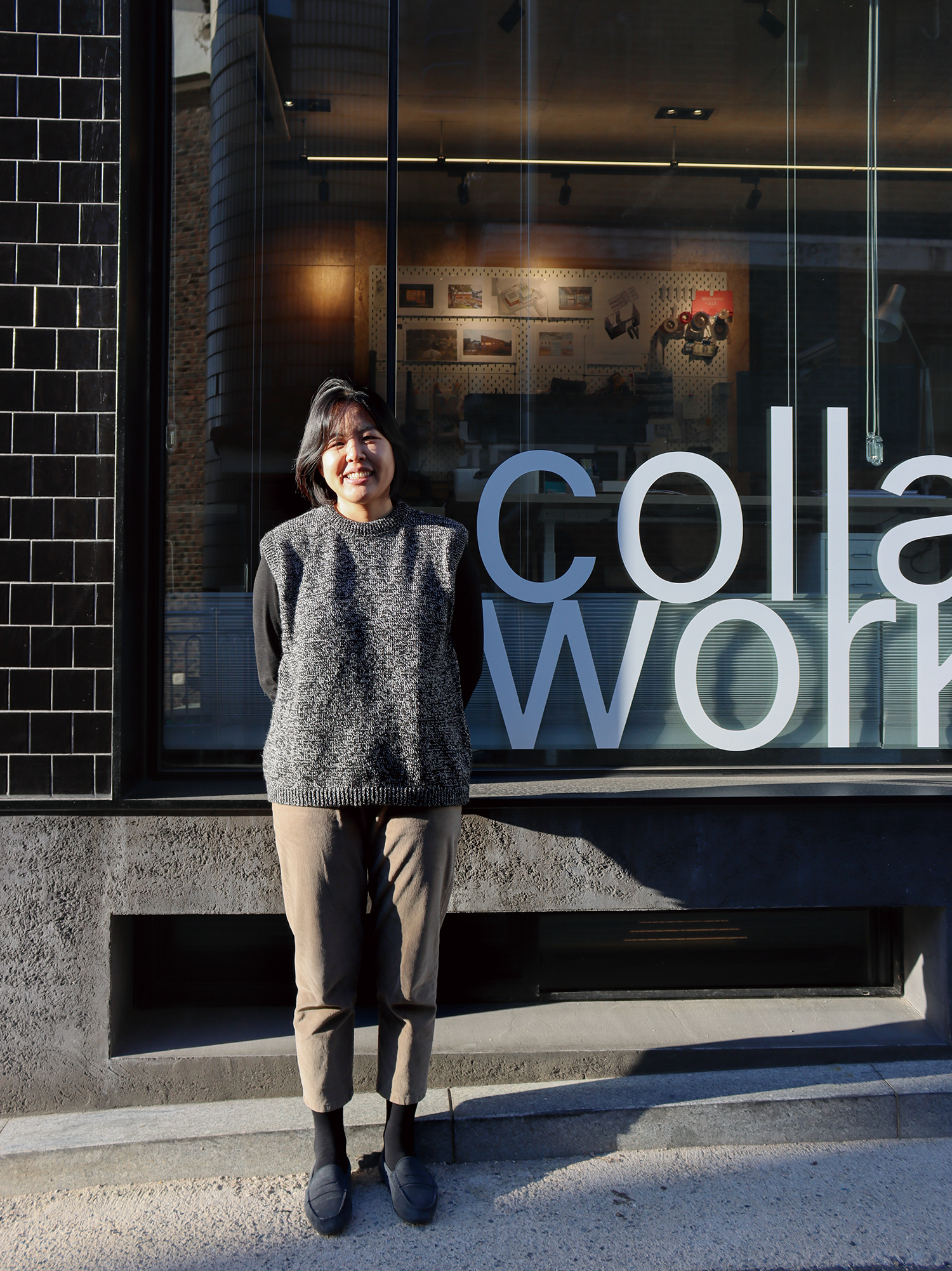SPACE January 2024 (No. 674)
‘I am an Architect’ was planned to meet young architects who seek their own architecture in a variety of materials and methods. What do they like, explore, and worry about? SPACE is going to discover individual characteristics of them rather than group them into a single category. The relay interview continues when the architect who participated in the conversation calls another architect in the next turn.
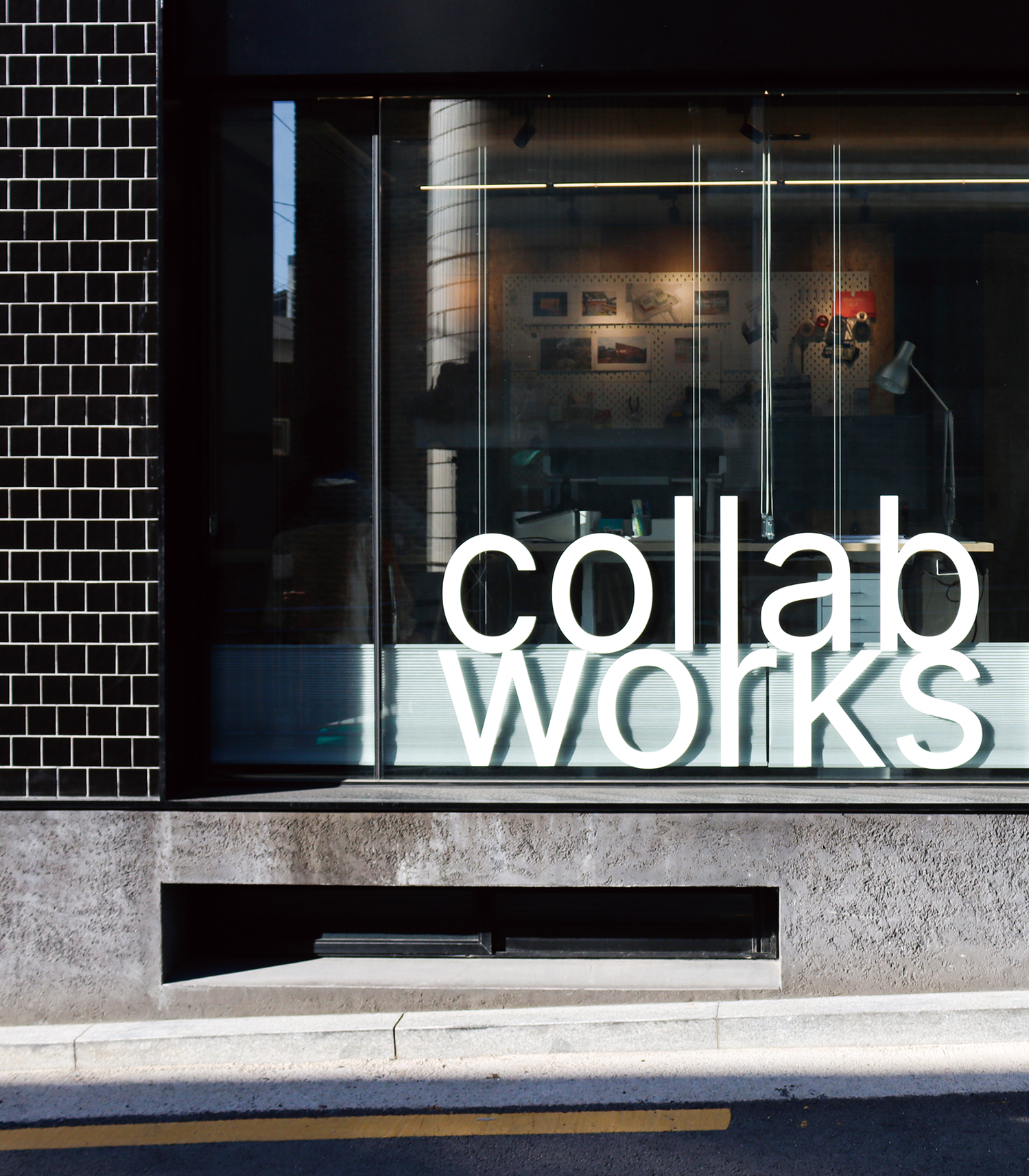
interview Choi Sylvia Soohee, Kwon Bojune co-principals, Collab Works × Kim Jia
Connected to Everyday Life
Kim Jia (Kim): This office space looks fantastic. Is this building primarily used as an office building?
Choi Sylvia Soohee (Choi): Oh, it isn’t owned by us; we lease it for our office. (laugh) I stumbled upon this place while searching for office space in the area. I heard that the owner personally designed this building. Apparently they studied architecture and design at Pratt Institute, although the ownership has since changed hands.
Kim: It’s on the first floor, and those large windows provide a clear view outside.
Choi: The first company in New York I worked for was also on the first floor. I’ve always liked the idea of having an office on the ground level to feel connected to everyday life. You get to see the neighbourhood residents passing by regularly. There’s even a neighbour who walks their dog every day and greets me.
Kim: Could it be that your experiences in New York influenced your decision to settle in Itaewon?
Choi: Absolutely. Living in Brooklyn, New York, for quite a while, I found that Itaewon in Seoul has a similar vibe, especially when it comes to change and diversity. Itaewon manages to preserve the old while continually introducing something new. Plus, there’s a substantial foreigner community here, which brings a unique energy.
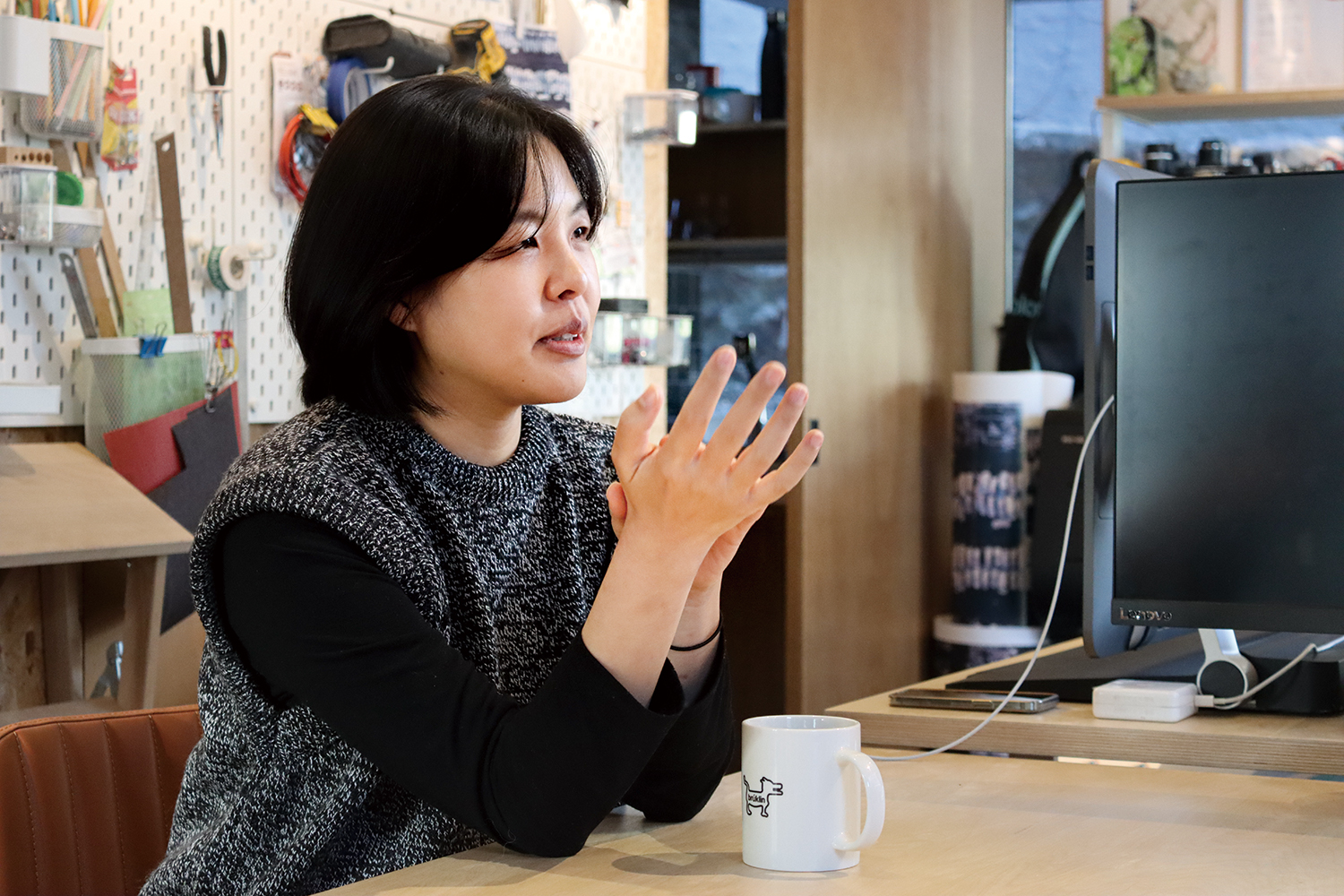
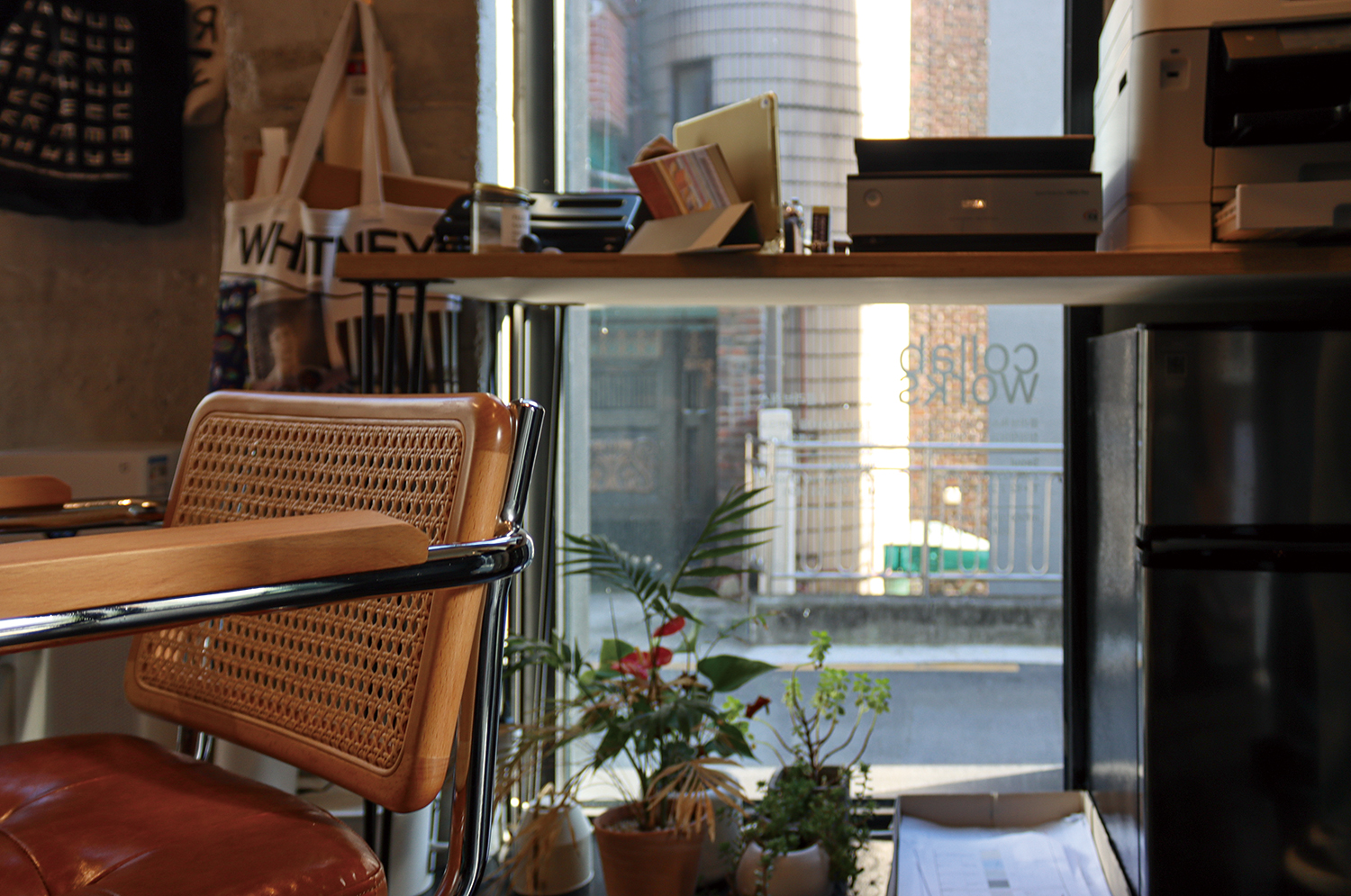
When Architecture Meets Photography
Kim: After completing your master’s degree in the United States and spending a considerable time abroad, you became co-principal of JeongChoi Works. And this year, you co-founded Collab Works with photographer Kwon Bojune. What led to your decision?
Choi: After completing my master’s degree, I joined an architectural firm in New York, and, around the same time, Jeong Daegeon (director, daegeonworks), who worked as a co-principal at JeongChoi Works, was pursuing studies at Columbia University. Starting around 2016, we each worked at different companies, but engaged in collaborative projects. It was during this period that I met Kwon, who was involved in photography in New York, and we began sharing our mutual interest in both architecture and photography. In Korea, following our collaboration with SON-A (principal, Son Joohui) and our selection for the Yeongju Share Platform design competition, we operated as JeongChoi Works from 2020. However, at the right moment, we decided to pursue independent paths. This decision prompted me to delve deeper into my own artistic style, rekindling my fascination with my earlier works that expressed architecture through diverse media. It was during this period that I founded our studio alongside photographer Kwon.
Kim: What kind of projects piqued your interest during this journey?
Choi: While working at a company, I often yearned to work on my own projects. Since there were no clients, I frequently wondered about the kind of architectural work that could be accomplished in such situations. I started contemplating taking on various small and large projects through competitions or exhibitions under my own name. One notable project was the exhibition at the Museum SODA titled ‘ARTIFICIAL NATURE: Capturing Nature in Concrete’ (2018). In addition to that, we curated an exhibition at the Art Omi in New York, showcasing the works of architects exploring the theme of death, and we also participated in the ‘The Self-Evolving City’ (2017) exhibition at the UIA Seoul World Architecture Exhibition, focusing on the theme of the future city. These endeavours spanned various forms of art, including installations, sculptures, and publications.
Kim: You’ve maintained a focus on the collaboration between architecture and photography. It seems that Collab Works revolves around architects and photographers working together.
Choi: At present, we have three ongoing collaborative projects. ‘Nodsom’ is an architectural photography project that documents the transformation of late industrial areas in New York, including Brooklyn and Queens. Kwon proposed the idea of capturing the city’s transformation, and I contributed by identifying which buildings would be interesting from an architectural perspective and conducting research. We also write about the buildings as part of our collaboration. ‘Local Artists’ is a project where Kwon photographs artists who participated in his New York residency. We initiated this project by contemplating what it would be like to create models of the spaces where we shoot portraits. Another project that Jeong and I proposed and are actively working on is ‘Drone Archive’, which involves using a drone to photograph contemporary European architecture.
Kim: I’m curious about how your work extends beyond the exhibition platform.
Choi: If showcasing our work through physical exhibitions and books is the most straightforward approach, ‘Nodsom’ and ‘Drone Archive’ opt for a different route. We have a dedicated website where we host online exhibitions. People who have seen these exhibitions often reach out to us. There was also a Turkish architect who requested that we provide a drone-photographed image of the Einstein Tower for use in a publication. As for Local Artist, it initially had a physical exhibition, but since the project is ongoing, we are contemplating how to archive it effectively. Furthermore, we are constantly brainstorming ways to further develop these works architecturally.
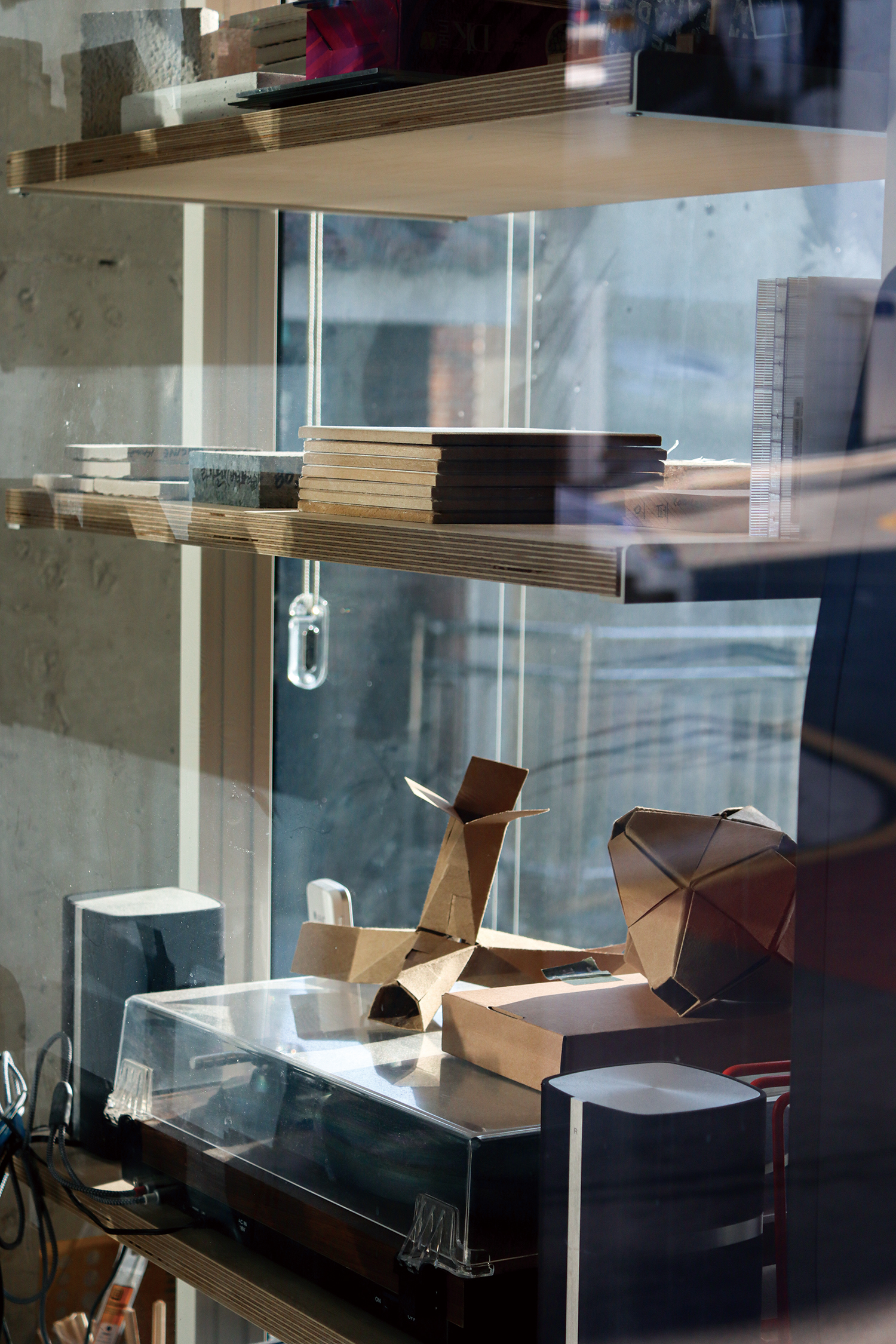
Passing Through Familiar Yet New Experiences
Kim: Your office, which focuses on design, seems quite distinct in essence, and the spectrum of your work is broad. Reflecting on the projects from the JeongChoi Works era, it appears that interior work, covering various projects in private and public sectors, architecture, and interior design, has been a standout. Could you share more about this?
Choi: Yes, our collaboration with URBANPLAY (principal, Hong Jooseok), marked the beginning of a significant new phase. We took on several commercial interior projects, such as the P.ark café (2021) in Yeongdo-gu, Busan and the SCRAB (2021) art lounge and gallery. My experience in New York heavily influenced these designs. There, the opportunities for new buildings were limited, often leading to renovation or interior-focused projects. This experience shaped my perspective, especially since the concept of interior design there was quite different from what I encountered in Korea.
Kim: In what ways did you find it to be different?
Choi: In the U.S., interior work often involves renovating old buildings, which typically requires a lengthy permitting process and the involvement of architects. It seemed natural for architects to undertake interior projects. In Korea, I initially approached interior design projects as architectural work, but soon realised the distinction to be made between architects and spatial designers. Yet, fundamentally, whether it’s a building or an interior space, the design process is influenced by the site’s conditions and limitations.
Kim: Tell me about the Yeongju Share Platform, your first public project in Korea.
Choi: The Yeongju Share Platform was not only Collab Works’ first public project in Korea but also the first project we secured. It took a while to complete, and the entire process was a continuous learning experience. I had previously participated in public projects in the U.S. and expected similarities, but the experience in Korea was quite different. We faced unique challenges, such as administrative complexities and processes unfamiliar in architecture. Each floor of the Yeongju Share Platform had different requirements from various departments, and balancing these with the set renovation budget was particularly challenging. It made me realise the critical role and skills of architects in successfully handling many public projects against all odds.
Kim: Having experienced both private and public projects in Korea, what are your thoughts?
Choi: I believe working on public projects is a continual responsibility. The biggest dilemma in architecture is whether only wealthy clients can commission good buildings. I recall joking with a colleague in the U.S. about this—comparing our work in selecting stones for wealthy clients to the work of those dedicating their lives to saving dolphins. It’s not that our work lacks meaning, but as architects, we should consistently strive to offer quality spaces for the public domain.
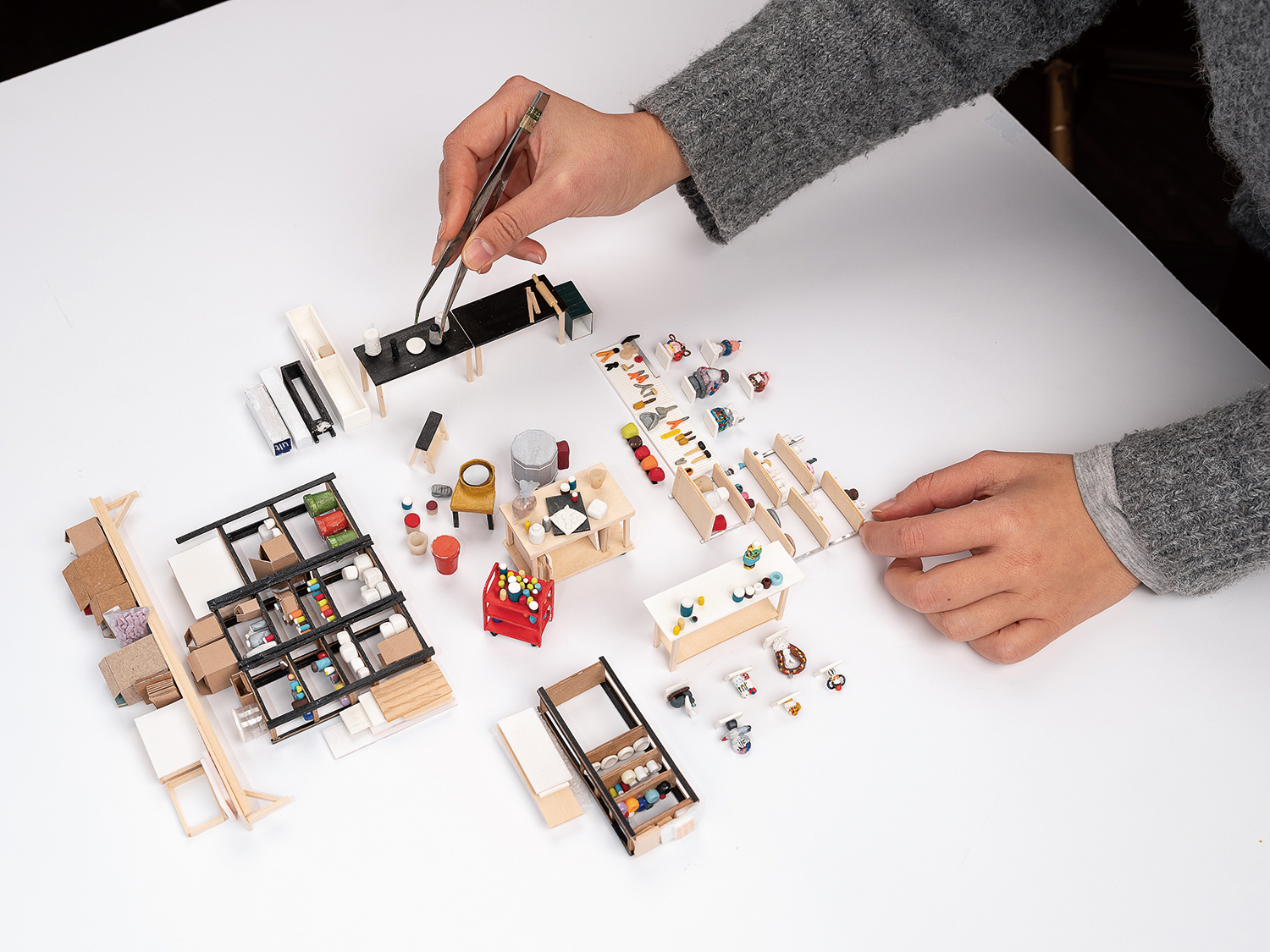
Model of Local Artists (Studio of Kwon Jaena) ⓒCollab Works
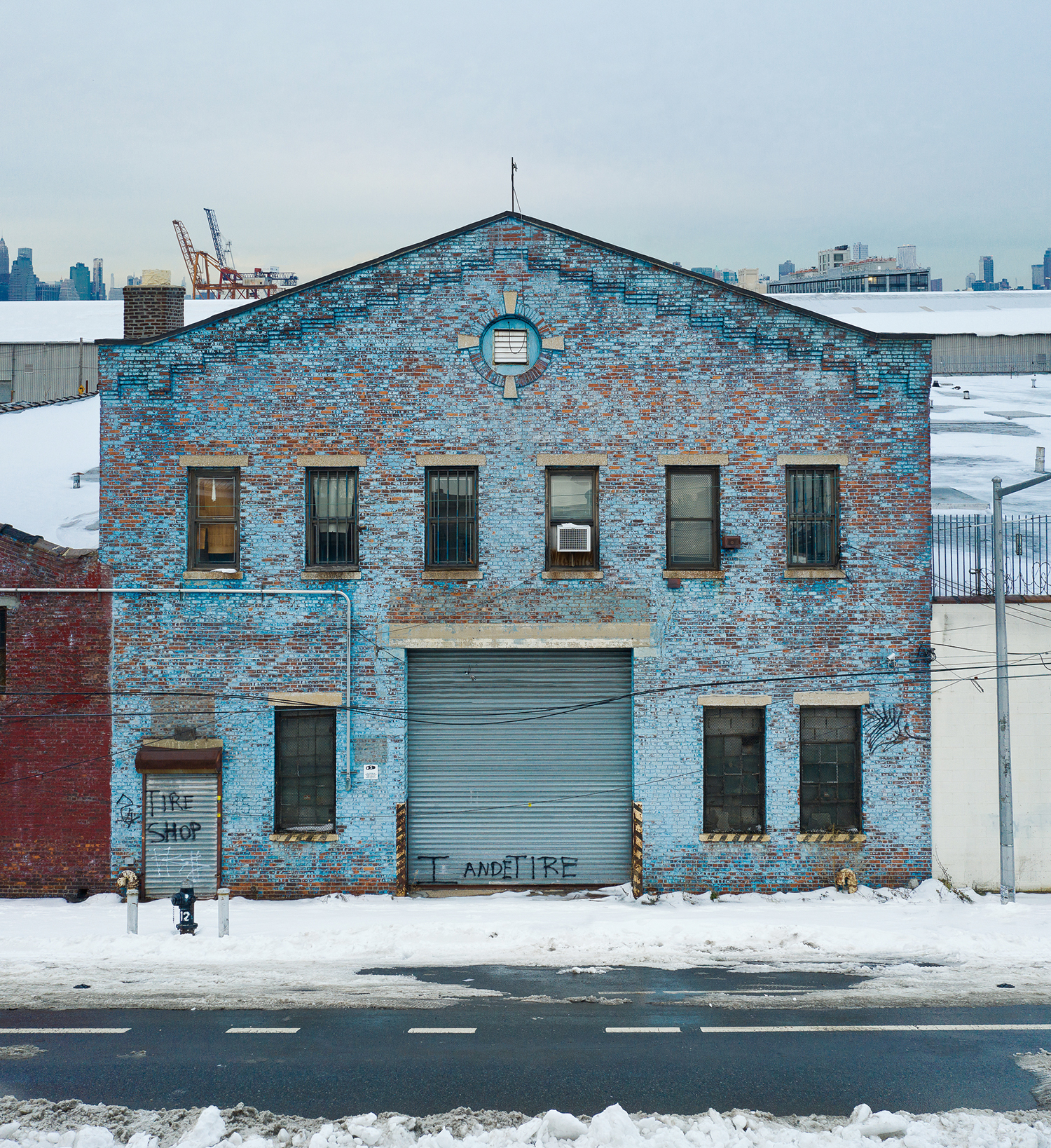
Image of Nodsom ⓒCollab Works
Fostering Collaboration
Kim: Please tell us about the projects you are currently working on.
Choi: Although I have branched out from JeongChoi Works, I still collaborate with Jeong on several projects. A notable example is the townhouse masterplan Huearim in Jeju Island. Independently, Collab Works is handling three interior projects: renovating a 250-pyeong office in Gasan Digital Complex, designing both a new gallery in Sindang-dong and a café interior in Canada. We are also continuing our collaborations in architecture and photography.
Kim: Could you elaborate on the type of collaboration Collab Works aims for? What kind of collaborations do you pursue?
Choi: Collaboration is indispensable in architecture. It could range from working with clients to constructors, technicians, and various consultants. At Collab Works, we aim to extend this scope further. Currently, we collaborate in planning, photography, and graphic design, but we’re open to branching out into other fields, like music. Our collaboration approach isn’t just about fulfilling client demands in a hierarchical relationship. Instead, we focus on equal partnerships, sharing ideas, and finding common ground.
Kim: With such diverse collaborations, what kind of architectural work do you plan to continue in the future?
Choi: Collaboration is central to Collab Works. While there aren’t many firms with a similar structure, we often look at domestic and international projects for direction. One impressive project I’ve seen recently is The Mile-Long Opera, a biography of 7 o’clock (2018) by Diller Scofidio + Renfro. The architects, who designed The High Line in New York, collaborated with a composer to turn the location into an opera stage. They organised choirs representing various New York communities, aligning them along the High Line’s lengthy railway for the performance. It’s a prime example of an architect adding social and cultural dimensions to their design, creating a new movement. I believe our ongoing collaborative projects at Collab Works can evolve in a similar manner. Even if our focus might be on photography or models in the short term, our observations and perspectives will gradually blend into our architecture, defining the distinct character of Collab Works.
Choi Sylvia Soohee, Kwon Bojune our interviewees, want to be shared some stories from Chon Jaewoo (principal, HYPERSPANDREL) in February 2024 issue.
